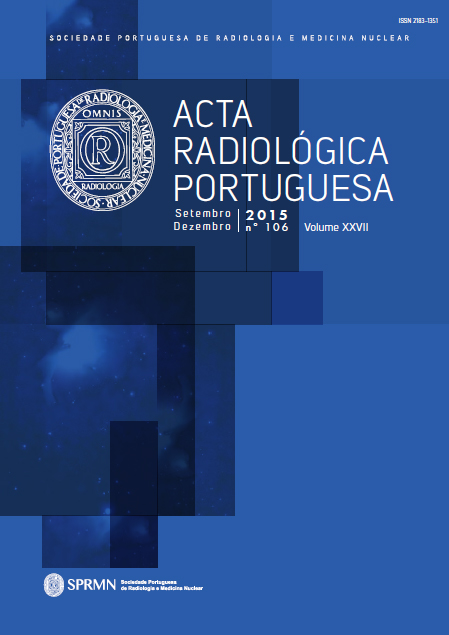Diagnostic accuracy of CT angiography for infrapopliteal lesions in patients with diabetic foot ulcers undergoing endovascular revascularization
DOI:
https://doi.org/10.25748/arp.13302Abstract
Background: Computed tomography angiography (CTA) is an accepted technique for selecting patients with peripheral arterial disease for surgical and endovascular treatment. There is limited data regarding its accuracy for infrapopliteal vessels in patients with diabetic foot.Purpose: Evaluate the diagnostic accuracy of CTA for below the knee arteries in patients with diabetic foot.
Methods: Single-center retrospective analysis of CTA and Digital Subtraction Angiography imaging findings in 14 patients that underwent peripheral arterial revascularization due to diabetic foot ulcers. The sensitivity and specificity of CTA was assessed according to each arterial segment based on an adapted Rutherford Score of disease impairment.
Results: CTA overall sensitivity and specificity for the detection of significant arterial lesions was 1 (95% C.I. 0.89-1) and 0.7 (95% C.I. 0.35-0.93), respectively.
By arterial segment, the sensitivity and specificity for the anterior tibial artery were 0.96 (95% C.I. 0.88-0.99) and 0.86 (95% C.I. 0.57-0.98), for the posterior tibial artery were 0.98 (95% C.I. 0.90-0.99) and 0.93 (95% C.I. 0.66-0.99) and for the peroneal artery were 0.93 (95% C.I. 0.83-0.98) and 0.72 (95% C.I. 0.42-0.92), respectively.
Conclusion: CTA has excellent diagnostic accuracy and allows screening of diabetic patients with infrapopliteal peripheral arterial disease.
References
Shah BR, Hux JE. Quantifying the risk of infectious diseases for people with diabetes. Diabetes Care. 2003;26:510-3.
Boulton AJ, Vileikyte L, Ragnarson-Tennvall G, Apelqvist J. The global burden of diabetic foot disease. Lancet. 2005;366:1719-24.
Jeffcoate WJ, van Houtum WH. Amputation as a marker of the quality of foot care in diabetes. Diabetologia, 2004;47:2051-8.
Graziani L, Silvestro A, Bertone V, Manara E, Andreini R, Sigala A, Mingardi R, De Giglio R. Vascular involvement in diabetic subjects with ischemic foot ulcer: a new morphologic categorization of disease severity. Eur J Vasc Endovasc Surg. 2007 Apr;33:453-60.
Faglia E, Mantero M, Caminiti M, Caravaggi C, De Giglio R, Pritelli C, Clerici G, Fratino P, De Cata P, Dalla Paola L, Mariani G, Poli M, Settembrini PG, Sciangula L, Morabito A, Graziani L. Extensive use of peripheral angioplasty, particularly infrapopliteal, in the treatment of ischaemic diabetic foot ulcers: clinical results of a multicentric study of 221 consecutive diabetic subjects, J Intern Med. 2002;252:225-32.
Jacqueminet S, Hartemann-Heurtier A, Izzillo R, Cluzel P, Golmard JL, Ha Van G, Koskas F, Grimaldi A. Percutaneous transluminal angioplasty in severe diabetic foot ischemia: outcomes and prognostic factors, Diabetes Metab. 2005;31:370-5.
Downloads
Published
Issue
Section
License
CC BY-NC 4.0


